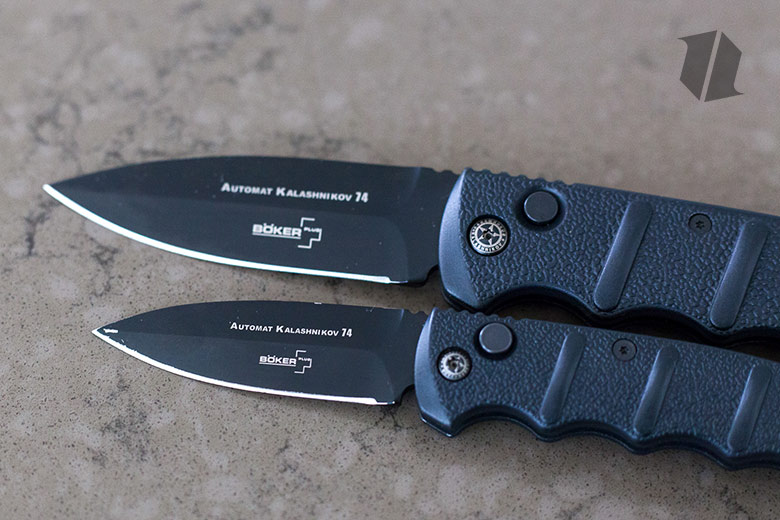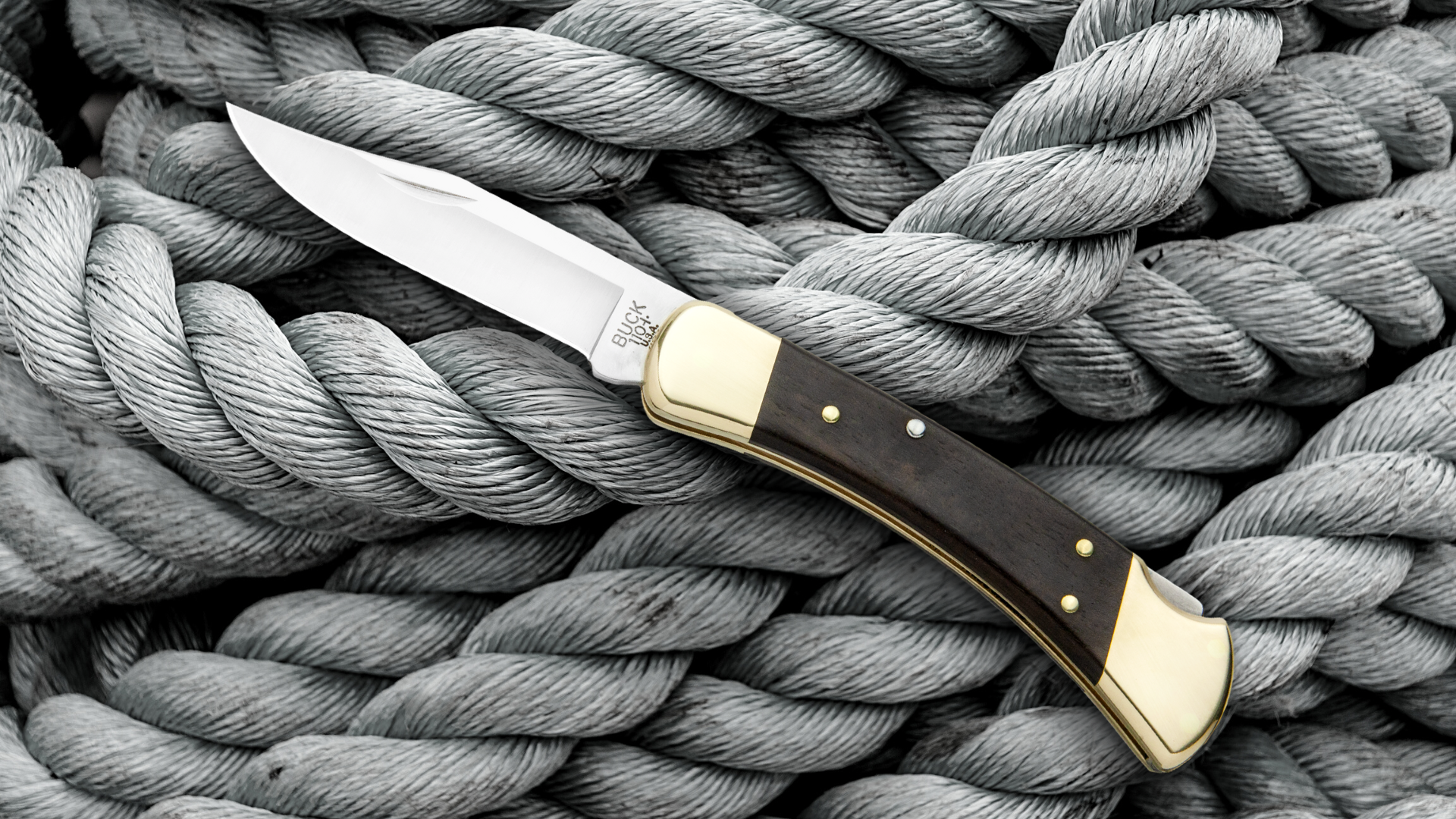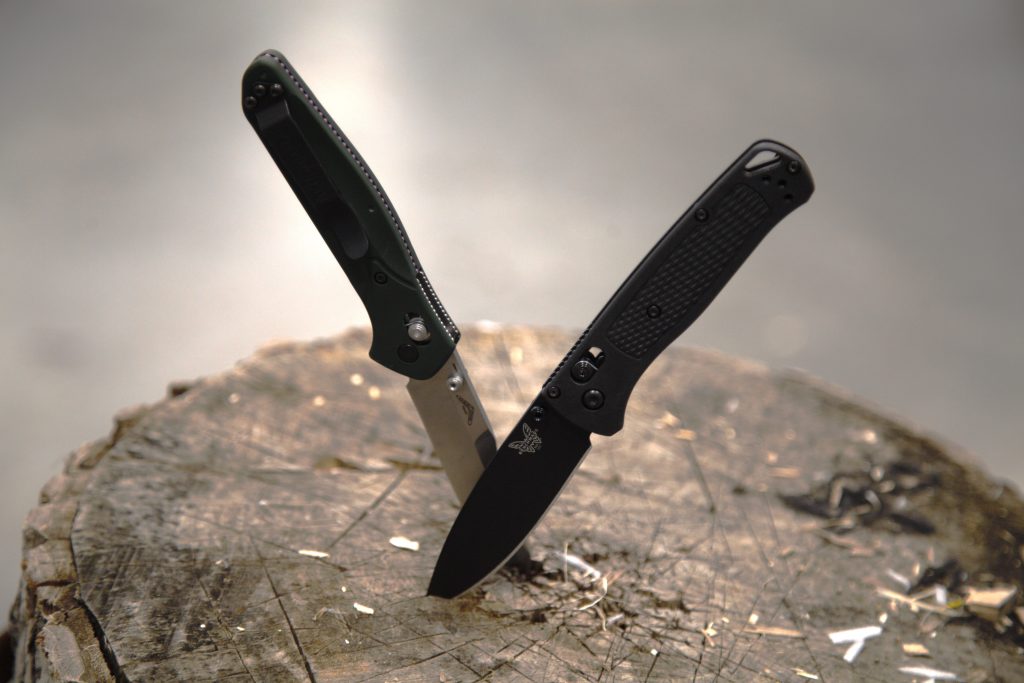
In the years I’ve worked in the knife industry, the Benchmade Bugout and 940 Osborne have tattooed themselves to the very essence of my soul. When people ask me knife questions, they ask about these two knives more than almost any other. I have disassembled, modified, and rebuilt these knives on countless occasions. I have literally had dreams about these knives. Blade HQ has sold thousands of these iconic blades, and we love them both. But today, these blade brethren are going to war.
It’s no secret that Benchmade knives are on the premium side. Benchmade makes top-quality tools in their Oregon factory, and they back them with their incredible lifetime warranty. Heck, their tagline is “Yours, For Life.” Benchmade creates heirloom-quality knives, and that means an heirloom-quality price tag. So, unless you’re in deep like me and ponied up for both a Bugout and a 940 Osborne, you’re probably choosing between them. Today, I’m going to help you find out which one is for you.
The Benchmade Bugout
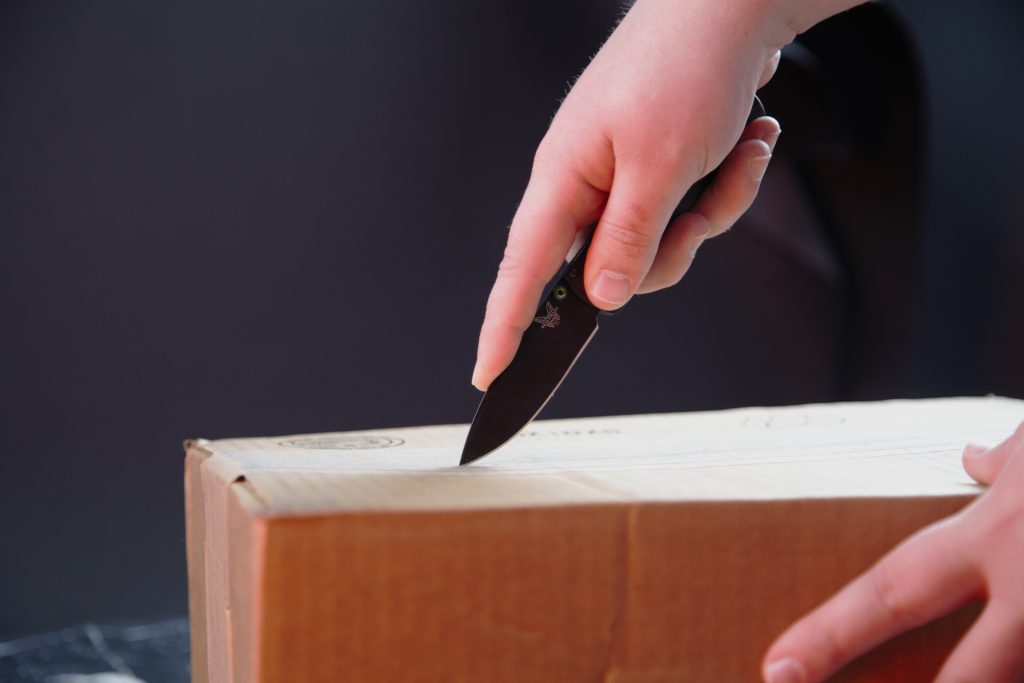
The Benchmade Bugout is the second best-selling knife in Blade HQ history, right after the Boker Kalashnikov (don’t worry, we’ll talk about that one day too). I think the reason it’s been so incredibly popular is its clean, simple, and lightweight design. It’s difficult to point to one distinguishing feature of the Bugout, and that’s a good thing. It flies under the radar, and weighing in at less than two ounces, even you’ll forget it’s in your pocket.
That is, until you need it. It offers a full handle with gentle texturing, providing a secure grip even with gloved hands. The Bugout strikes a perfect balance of lightweight and concealable footprint and well-endowed handle and blade design for hard work. It’s also backed up by a thriving aftermarket for handle scales, thumb studs, AXIS Lock bars, backspacers and more. Benchmade also produces a few upgraded variants with fancy blade steels and handle materials. There is a Bugout for everyone, and if there isn’t, you could probably make one!
The Benchmade 940 Osborne
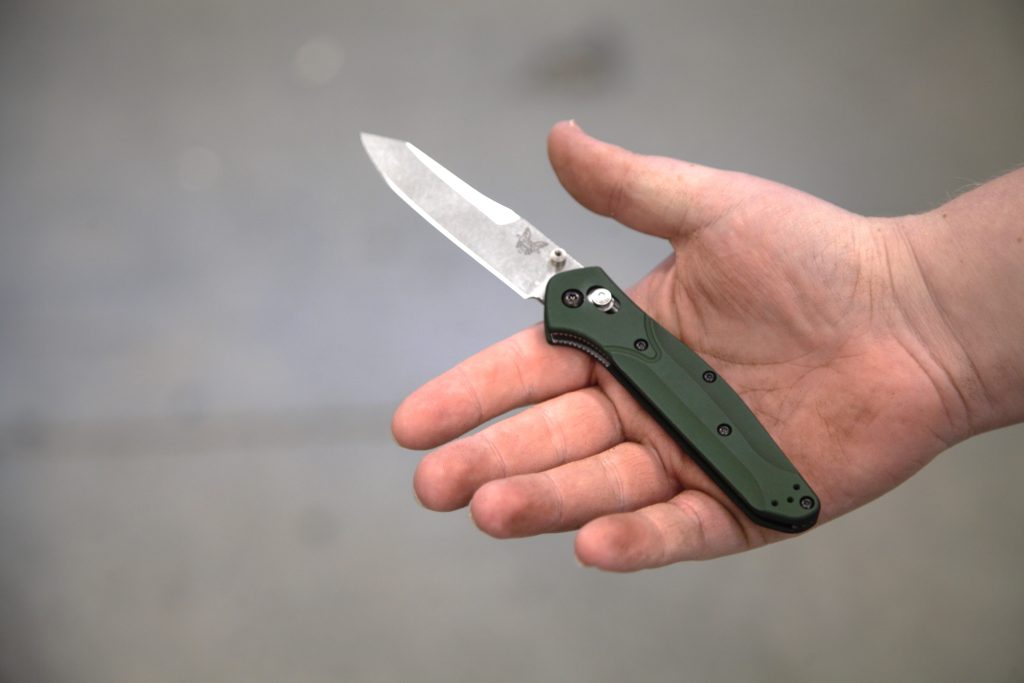
Warren Osborne designed the Benchmade 940 based on a fixed blade he made for his duties on a ranch. People often describe its blade as a Reverse Tanto, but to my eye, that’s a spay blade. Whichever way you think of it, the extra material near the tip of the knife provides this knife with great tip strength. Behind that tip is a long, straight section of blade that lends itself to slicing and push cuts.
In my opinion, the more distinguishing feature of the Osborne is its handle. It’s rather slim compared to most other knives in its size range, but somehow still fills out the hand like a big knife. This is what I love the most about the 940 – it’s slim and sleek in the pocket but feels like a beefy cutting tool in the hand. It has a fair amount of aftermarket support, but people don’t buy 940’s to make them pretty. This knife wants to go to work.
Should you get the Benchmade Bugout or the 940 Osborne?
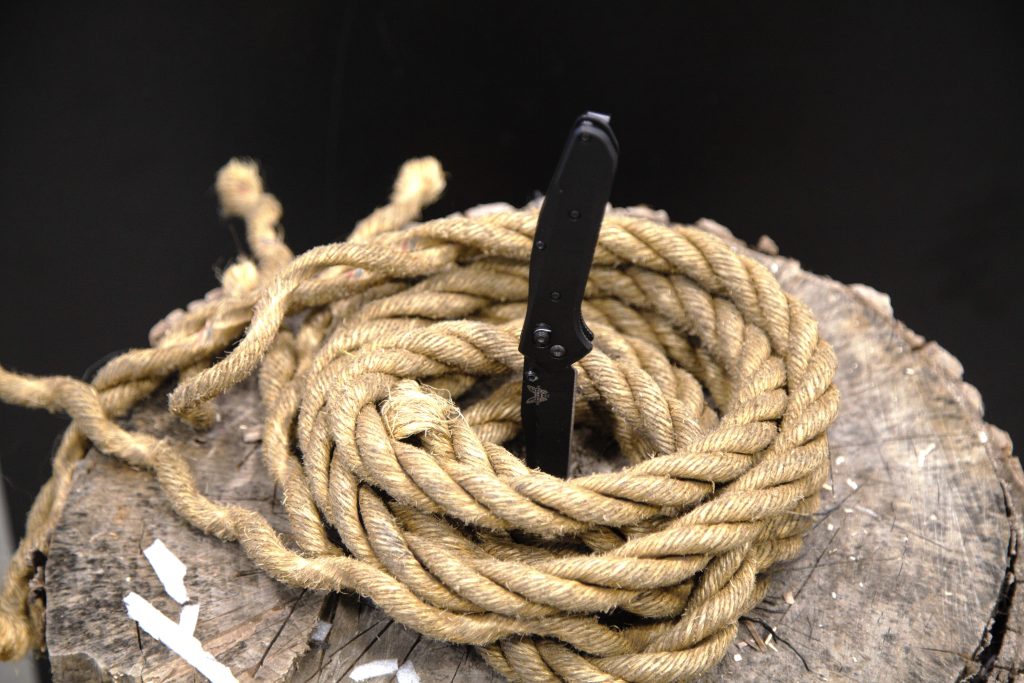
If your cutting jobs mostly include food and packaging, the Bugout is for you. If your cutting jobs include stuff like ropes and wood, I’d pick the Osborne.
The reason I make these recommendations comes down to blade thickness, width, and grind geometry. The Benchmade 940 is just thicker than the Bugout. It’s simple physics – a thicker blade will have a harder time cutting through materials. In addition, the 940 has a narrower blade and a partial flat grind, which makes for a thick edge. That means the 940 is much stronger and can tolerate more abuse, which makes it a great choice for hard users. I carry my 940 when I go hiking because it’s small and light, but I know it can do some real work if needed.
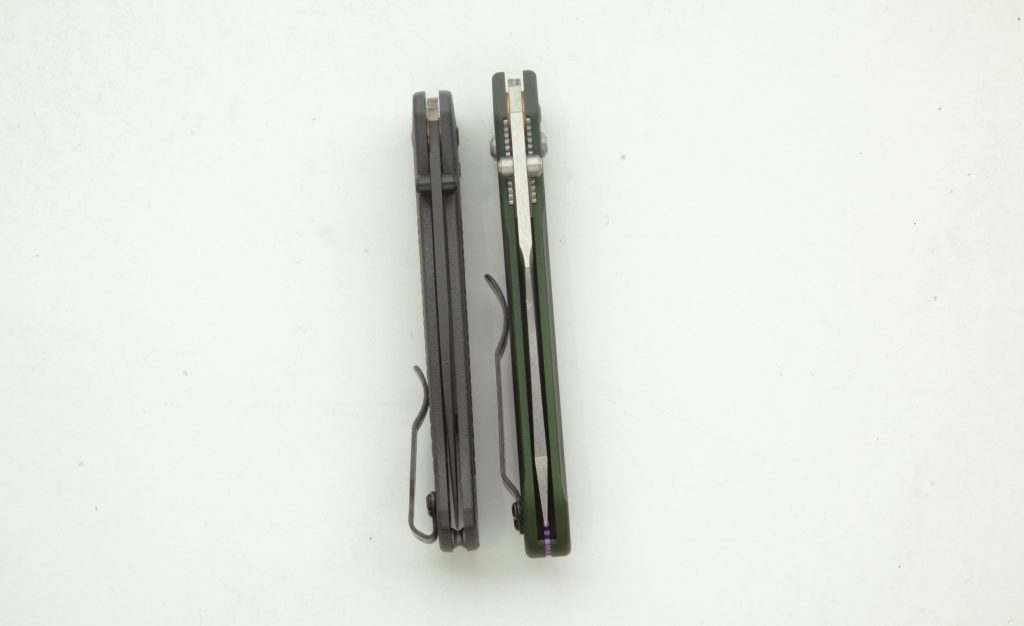
But for EDC, I gravitate to the Bugout. Its blade is wider, thinner, and has a broader grind, so its edge is very thin. It glides through tape, cardboard, paper, fruit, meat, etc. with ease. But that thin edge needs to be respected more than the 940! The Bugout is not for scraping horse hooves, breaking sticks into kindling, or opening cans. Leave that work to a thicker knife.
So, if you’re shopping, ask yourself what your daily cutting work looks like and let that be your guide.
Challengers Approaching: Benchmade Bugout and 940 Osborne Alternatives
I know this article is about Benchmade’s 940 and Bugout knives, but there are a few alternatives I think you should consider as well.

Both the 940 and the Bugout’s base models come with a CPM S30V blade. This steels is prized for its high edge retention and stainlessness, but it’s not especially tough. The 940 makes up for this with thickness, but that can only take you so far. That’s why my favorite Benchmade is the Freek with its CPM M4 blade. That steel will rust on you if you’re not careful, but it comes with a black Cerakote finish to protect it. Then you can enjoy the immense toughness and edge retention it offers! Not only does it use a tougher steel, but the Freek is bigger and thicker than either the Bugout or 940. And its grind is taller too. In my opinion, it’s the best of both worlds. If that sounds good to you, I’d also look at the Spyderco Manix and the Microtech MSI.

If you’re on a budget, there are some great options too. The AXIS Lock’s patent expired a few years back, and now other companies are getting in the mix. The Kershaw Iridium is a great knife for less than $65, featuring an aluminum handle and a D2 blade. Other knives I’d recommend to people on a budget are the Bestechman Ronan and CJRB Hectare.

I wouldn’t call either the 940 or Bugout “tactical,” so if you’re looking for a self-defense/combat knife, I’d look elsewhere. The Benchmade Bailout is contender, having been called “The Tactical Bugout” by more than just me. I’d also consider the Microtech Amphibian, Benchmade Adamas, and SOG Seal XR, although all three of these are MUCH bigger.
Which is better, the Benchmade Bugout or the 940 Osborne?
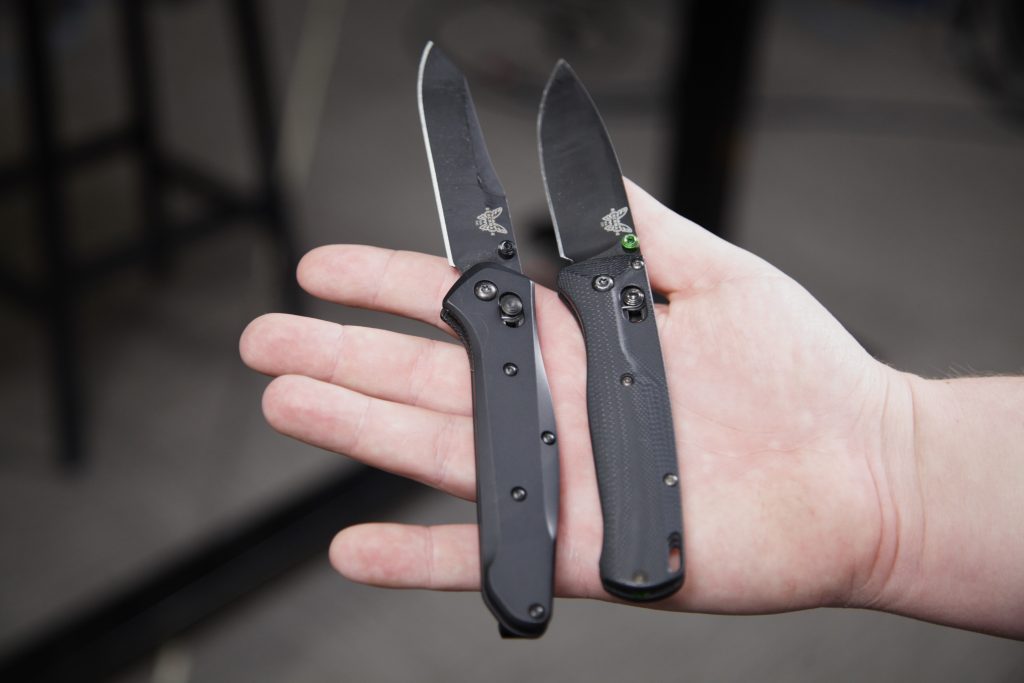
Ultimately, that’s up to you. If I had to get rid of either my Bugout or my 940 Osborne, it would be hard, but I think I’d say goodbye to the Bugout. I love the metal handle on the 940, and its blade feels so usable to me. It may not make as cuts as pretty, but it can open a box just like a Bugout. A tear or two for the Bugout would be shed, but I think I prefer the 940. Don’t ask me again tomorrow, I might give you a different answer.
I hope you have found some useful information here and now know which knife might be better for you! Happy knife shopping!


